In the intricate tapestry of Earth’s ecosystems, temperate woodlands and shrublands stand as captivating realms that host a diverse array of life. These habitats, nestled between the lush expanses of forests and the open landscapes of grasslands, offer a unique blend of conditions that have nurtured a remarkable collection of wildlife.
Table of Contents
From elusive predators to resourceful foragers, these environments provide a home to a myriad of animals, each exquisitely adapted to thrive amidst the subtleties of light, temperature, and vegetation that define temperate woodlands and shrublands. Join us as we embark on a journey to discover the lives of ten intriguing animals that call these habitats home, unraveling their remarkable adaptations and the roles they play in these dynamic ecosystems.
Here’s a list of 10 Animals that live in temperate woodland and shrubland
- White-tailed deer (Odocoileus virginianus)
- Red Fox (Vulpes vulpes)
- Eastern Chipmunk (Tamias striatus)
- Gray Squirrel (Sciurus carolinensis)
- Bobcat (Lynx rufus)
- Raccoon (Procyon lotor)
- Wild Turkey (Meleagris gallopavo)
- Cottontail Rabbit (Sylvilagus spp.)
- Eastern Box Turtle (Terrapene carolina)
- Gray Wolf (Canis lupus)
1. White-tailed deer (Odocoileus virginianus)

The white-tailed deer (Odocoileus virginianus) establishes a profound connection with temperate woodlands and shrublands, reflecting a delicate balance between adaptation and habitat. These captivating creatures have intricately woven their lives into the tapestry of these ecosystems, embodying the essence of harmonious coexistence.
White-tailed deer’s affinity for woodlands and shrublands is not by chance but a result of a mutual fit. These habitats offer a synergy of resources that align with the deer’s biological needs. The dense vegetation, comprised of trees, shrubs, and undergrowth, provides not only sustenance but also shelter. The intertwined branches and foliage create a protective haven where the deer find refuge from predators and harsh weather conditions.
2. Red Fox (Vulpes vulpes)

The red fox (Vulpes vulpes) emerges as a charismatic inhabitant of temperate woodlands and shrublands, seamlessly blending its presence into the intricate fabric of these diverse ecosystems. Its captivating presence and adaptable nature make it a perfect fit for the challenges and opportunities presented by these habitats.
Red foxes are well-suited to woodlands and shrublands due to their inherent versatility. These habitats offer a dynamic mix of vegetation, from towering trees to shrubs and undergrowth. This variety caters to the red fox’s multifaceted needs, providing both shelter and ample opportunities for hunting.
Red foxes boast an adaptable diet, enabling them to exploit the resources offered by woodlands and shrublands. Their omnivorous tendencies allow them to consume a diverse range of foods, from small mammals like mice and rabbits to insects, fruits, and even scavenged carrion.
3. Eastern Chipmunk (Tamias striatus)
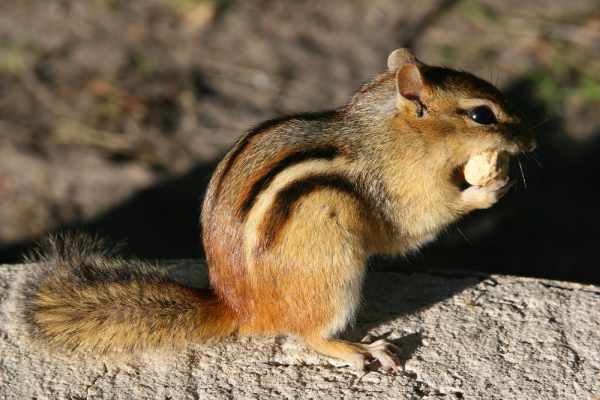
The Eastern Chipmunk (Tamias striatus) stands as a captivating inhabitant of temperate woodlands and shrublands. Despite its diminutive size, this small mammal is a true dynamo, bringing vitality to its habitat.
They thrive in temperate woodlands and shrublands due to their remarkable adaptations and the abundance of resources these habitats offer. Chipmunks are skilled burrowers. Woodlands and shrublands provide them with the necessary loose soil and vegetation to create intricate underground homes. These burrows offer protection from predators and harsh weather conditions.
Woodlands and shrublands also provide suitable nesting sites for chipmunks. The underbrush and vegetation offer concealed spots for females to give birth and rear their young. This helps protect the vulnerable offspring from predators.
4. Gray Squirrel (Sciurus carolinensis)
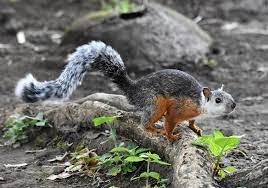
The Gray Squirrel (Sciurus carolinensis) is a common and well-known rodent species that can often be found in temperate woodland and shrubland ecosystems. These agile and adaptable creatures are recognized for their bushy tails, gray fur, and keen ability to navigate trees with ease. Their presence is an integral part of these ecosystems, contributing to the intricate web of interactions that sustain the balance of nature.
In temperate woodlands and shrublands, Gray Squirrels play various roles that impact both the environment and other organisms.
Gray Squirrels are well-suited to the conditions of temperate woodlands and shrublands. These habitats provide a mix of trees, shrubs, and understory vegetation that offer them ample resources and shelter. The squirrels are particularly adept at foraging for food and nesting materials in these environments. They can be found in a range of wooded areas, from urban parks to rural forests.
5. Bobcat (Lynx rufus)

The bobcat (Lynx rufus) is a captivating and adaptable wildcat species native to North America. With its distinctive appearance, elusive behavior, and impressive hunting skills, the bobcat holds a prominent place in the ecosystem of its habitats.
Bobcats are well-adapted to a variety of environments, including temperate woodlands and shrublands. These habitats provide the perfect mix of cover, vegetation, and prey for these solitary hunters. From dense forests to open shrublands, bobcats can be found across North America, from Canada to Mexico.
They are skilled predators with a diverse diet that includes small mammals like rabbits, squirrels, and rodents. They are also opportunistic hunters, preying on birds, reptiles, and occasionally larger animals like deer. Their stealthy approach and sharp senses make them effective hunters, capable of ambushing their prey with a sudden burst of speed.
6. Raccoon
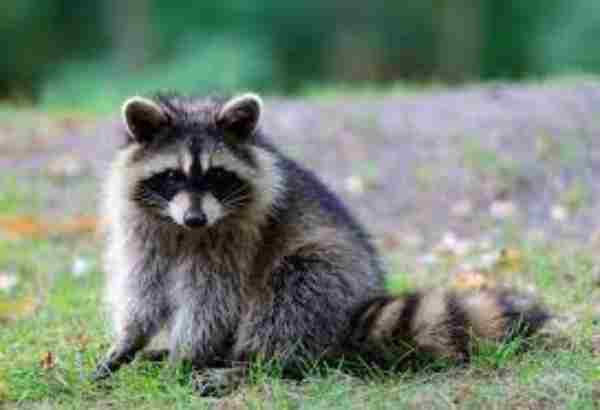
The raccoon (Procyon lotor) is a charismatic and adaptable mammal that is widely recognized for its distinctive appearance, clever behavior, and ability to thrive in a variety of environments. Native to North and Central America, raccoons have become a familiar sight in both urban and rural settings.
Raccoons are well-suited to temperate woodlands and shrublands due to their diverse diet and exceptional climbing abilities. These habitats provide a combination of dense vegetation, trees, and understory growth, offering raccoons ample opportunities for foraging, shelter, and nesting.
In temperate woodlands, raccoons take advantage of the abundance of food sources such as nuts, fruits, insects, small mammals, and bird eggs. The forested environment offers them trees to climb and seek refuge, while the understory and shrubland areas provide cover for hunting and nesting.
7. Wild Turkey
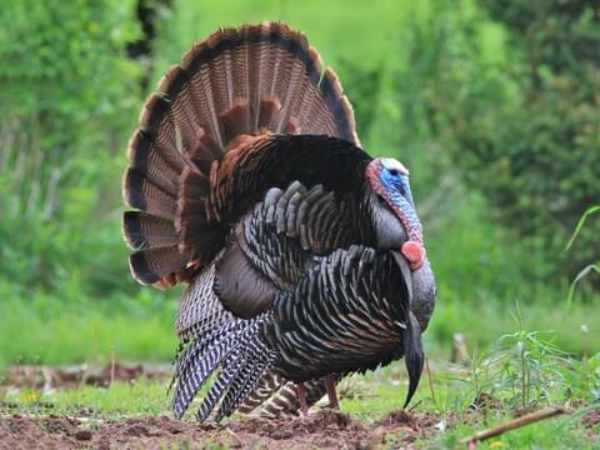
The Wild Turkey is a fascinating and majestic bird that can be found throughout North America. These birds are known for their striking plumage, which features a mix of rich browns, blacks, and metallic bronzes. Wild Turkeys are also prized for their meat, which is rich and flavorful and has become a staple of Thanksgiving dinners across the United States. But these birds are more than just a tasty meal – they play an important role in their ecosystems by spreading seeds and controlling insect populations.
Wild turkeys can be found in different environments, but one of their preferred habitats is the temperate woodland and shrubland ecosystem. Here, they have access to a variety of foods, such as acorns, berries, and insects, which sustain them throughout the year. The temperate woodland and shrubland also offer turkeys protection from predators and exposure to sunlight, which they need for their health and well-being.
8. Cottontail Rabbit (Sylvilagus spp.)

The cottontail rabbit is a small to medium-sized mammal belonging to the family Leporidae. These rabbits are known for their distinctive appearance, behavior, and widespread presence across various habitats in North and South America. Cottontail rabbits are commonly recognized for the distinctive white underside of their tail, which resembles a small cotton ball.
Cottontail rabbits are highly adaptable and can be found in a wide range of habitats, including grasslands, woodlands, shrublands, deserts, and even urban areas. They are native to North and South America and have a distribution that spans from Canada to parts of South America. Different species of cottontail rabbits inhabit various regions, adapting to the specific conditions of their habitats.
9. Eastern Box Turtle (Terrapene Carolina)
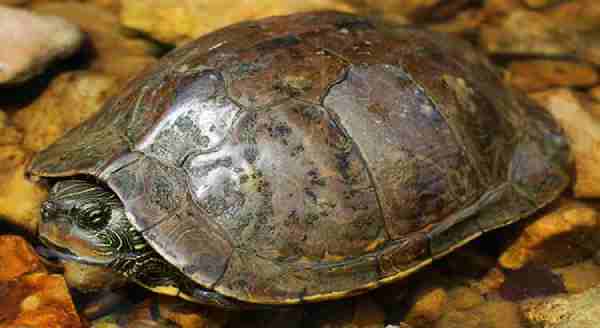
The Eastern Box Turtle (Terrapene carolina carolina) is a fascinating and iconic reptile that inhabits a variety of environments in the eastern United States. As a member of the land turtle family, these turtles have unique characteristics and behaviors that distinguish them from other turtle species.
These turtles inhabit a range of environments, including woodlands, grasslands, meadows, and shrublands. They are commonly found in the eastern and central parts of the United States, ranging from southern Maine down to Florida and west to Michigan and Texas. They thrive in diverse habitats, from deciduous forests to open fields.
10. Gray Wolf (Canis lupus)

The Gray Wolf (Canis lupus) is a highly adaptable and widespread species that can be found in a variety of habitats, including temperate woodlands and shrublands. This adaptability is one of the reasons for their presence in such environments.
Gray Wolves are known for their ability to inhabit a wide range of habitats, from forests and grasslands to tundra and desert regions. This adaptability is due to their flexible diet and hunting strategies, as well as their social behavior.
Temperate woodlands and shrublands provide an array of prey species that are suitable for Gray Wolves. These habitats often have populations of deer, elk, moose, and smaller mammals like rabbits and rodents that serve as the wolves’ primary food sources.
Conclusion
Overall, biomes like temperate woodland and shrubland are rich in wildlife. From red wolves to moose, bats to rabbits, there is no shortage of diversity in these habitats. Each species plays an essential role in the overall balance of the biome’s ecology and health; they serve as food sources for larger predators, pollinators for many plants, and produce biomass that is used by a variety of other animals.
We must remember to appreciate and respect all these creatures if we wish to preserve their unique habitats. To take positive action, accentuate the natural beauty around you with eco-friendly activities like gardening or participating in a local park’s cleanup day. Togetherness brings strength – let us all join together with a common goal of conserving our magnificent outdoor spaces so that creatures like those mentioned here will have enough safe habitat to exist into the future!
Reference
- https://earthobservatory.nasa.gov/biome/bioshrubland.php
- https://prezi.com/byqnzzf17ebq/temperate-woodland-and-shrubland-biome
A motivated philosophy graduate and student of wildlife conservation with a deep interest in human-wildlife relationships, including wildlife communication, environmental education, and conservation anthropology. Offers strong interpersonal, research, writing, and creativity skills.










